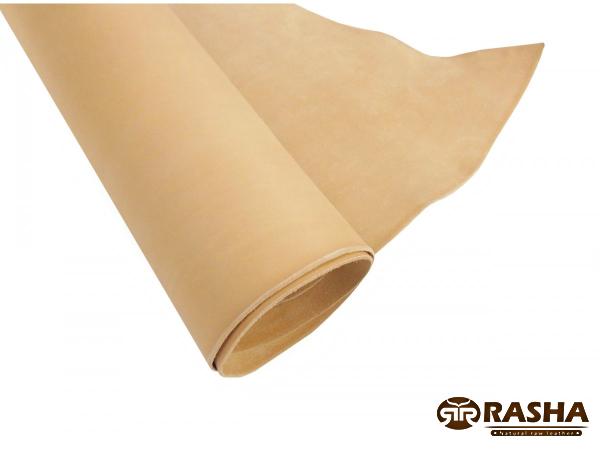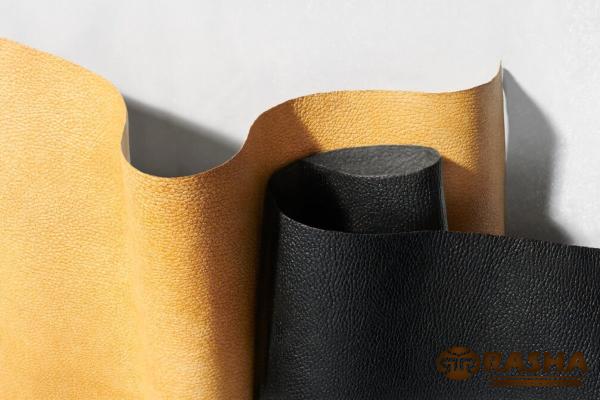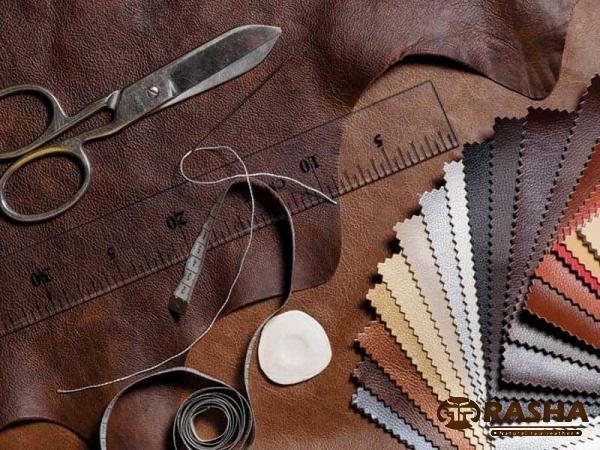In recent years, the fashion industry has witnessed a growing trend toward synthetic materials, including the increasing popularity of fake leather. Also known as vegan leather, faux leather, or pleather, this alternative material aims to replicate the appearance and texture of genuine leather without using animal skins. With sustainability concerns and ethical considerations driving consumer demands, this article explores the characteristics, production processes, environmental impact, and ethical dimensions of fake leather. What is Fake Leather? Fake leather is a synthetic material designed to resemble real leather. It is commonly made from various materials such as polyurethane (PU), Polyvinyl Chloride (PVC), and other microfibers. The manufacturing process involves adding a coating of plastic or rubber to a fabric base, creating a material that is more affordable and does not require the use of animal hides. Characteristics of Fake Leather: The quality of faux leather has improved considerably over the years, with manufacturers investing in advancements to enhance its visual and tactile resemblance to genuine leather. Some of the key characteristics of fake leather include: 1. Appearance: Fake leather can closely mimic the natural grain, color, and texture of real leather, making it difficult to distinguish at first glance. 2. Durability: Faux leather is generally known for its resistance to wear and tear, making it a durable option for various applications in the fashion industry. 3. Cost-effectiveness: The production cost of faux leather is significantly lower than that of genuine leather, making it a more affordable option for consumers. 4. Versatility: Faux leather is available in a wide range of colors, patterns, and finishes, offering designers and consumers greater flexibility in terms of creativity and customization. Manufacturing Process: The production of fake leather involves a series of steps that vary depending on the specific material used. However, the general process entails: 1. Substrate Preparation: A fabric base, usually made of cotton or polyester, is selected as the foundation for the faux leather material. 2. Coating Application: Synthetic materials like PU or PVC are applied to the fabric base using various methods, including lamination or calendering. This coating provides the material with a leather-like appearance. 3. Embossing and Finishing: To replicate the texture and grain of genuine leather, manufacturers use embossing techniques to create patterns and finishes resembling those found in nature. Environmental Impact: One of the significant benefits often associated with fake leather is its perceived lower environmental impact compared to genuine leather. However, the environmental footprint of synthetic materials is not entirely negligible.

leather
 Here are some key considerations: 1. Resource Consumption: The production of synthetic materials relies on non-renewable resources like crude oil, releasing greenhouse gases and contributing to climate change. Furthermore, the extraction and processing of these resources can have negative ecological impacts. 2. Chemicals and Toxicity: The production process of synthetic leather involves the use of potentially harmful substances such as solvents, adhesives, and dyes. These chemicals can pose risks to human health and the environment if not managed properly. 3. Disposal and Decomposition: While faux leather is more resistant to wear and tear, it is not biodegradable like genuine leather. Disposal of fake leather products can contribute to landfill waste, and the material can release harmful substances as it breaks down. Ethical Considerations: In addition to environmental concerns, the ethical implications of using fake leather have become a topic of debate. Some points to contemplate include: 1. Animal Welfare: Touted as a cruelty-free alternative, faux leather eliminates the need to slaughter animals for their skins. However, the production of synthetic materials still relies on petrochemicals that can have their own environmental and ethical consequences. 2. Fair Labor Practices: As with any manufactured product, there are concerns about the working conditions and labor practices in the production of synthetic leather. Ensuring fair wages and safe working environments for workers involved in the synthetic leather industry is vital for ethical consideration. 3. Communication and Transparency: Some critics argue that the marketing of faux leather as a sustainable alternative may sometimes be misleading, leading to consumer confusion. Genuine transparency and clear communication regarding the materials used and potential environmental impacts are crucial to creating an informed consumer base. Conclusion: Fake leather has undoubtedly emerged as a popular alternative to genuine leather, presenting a more sustainable and ethically-conscious choice for consumers. Its enhanced quality, cost-effectiveness, and versatility have made it a staple in the fashion industry. However, it is important to acknowledge the environmental and ethical trade-offs associated with the production and disposal of synthetic materials. As the demand for fake leather continues to grow, industry stakeholders must strive for innovation, invest in responsible production practices, and improve communicative transparency to make strides towards a genuinely sustainable and ethical alternative.1. Growth of the Fake Leather Market: The rise of ethical consumerism and sustainability concerns has been instrumental in driving the growth of the fake leather market. As consumers become more informed about the environmental and ethical implications of using genuine leather, they are turning to alternatives that offer similar aesthetics and functionality.
Here are some key considerations: 1. Resource Consumption: The production of synthetic materials relies on non-renewable resources like crude oil, releasing greenhouse gases and contributing to climate change. Furthermore, the extraction and processing of these resources can have negative ecological impacts. 2. Chemicals and Toxicity: The production process of synthetic leather involves the use of potentially harmful substances such as solvents, adhesives, and dyes. These chemicals can pose risks to human health and the environment if not managed properly. 3. Disposal and Decomposition: While faux leather is more resistant to wear and tear, it is not biodegradable like genuine leather. Disposal of fake leather products can contribute to landfill waste, and the material can release harmful substances as it breaks down. Ethical Considerations: In addition to environmental concerns, the ethical implications of using fake leather have become a topic of debate. Some points to contemplate include: 1. Animal Welfare: Touted as a cruelty-free alternative, faux leather eliminates the need to slaughter animals for their skins. However, the production of synthetic materials still relies on petrochemicals that can have their own environmental and ethical consequences. 2. Fair Labor Practices: As with any manufactured product, there are concerns about the working conditions and labor practices in the production of synthetic leather. Ensuring fair wages and safe working environments for workers involved in the synthetic leather industry is vital for ethical consideration. 3. Communication and Transparency: Some critics argue that the marketing of faux leather as a sustainable alternative may sometimes be misleading, leading to consumer confusion. Genuine transparency and clear communication regarding the materials used and potential environmental impacts are crucial to creating an informed consumer base. Conclusion: Fake leather has undoubtedly emerged as a popular alternative to genuine leather, presenting a more sustainable and ethically-conscious choice for consumers. Its enhanced quality, cost-effectiveness, and versatility have made it a staple in the fashion industry. However, it is important to acknowledge the environmental and ethical trade-offs associated with the production and disposal of synthetic materials. As the demand for fake leather continues to grow, industry stakeholders must strive for innovation, invest in responsible production practices, and improve communicative transparency to make strides towards a genuinely sustainable and ethical alternative.1. Growth of the Fake Leather Market: The rise of ethical consumerism and sustainability concerns has been instrumental in driving the growth of the fake leather market. As consumers become more informed about the environmental and ethical implications of using genuine leather, they are turning to alternatives that offer similar aesthetics and functionality.
Specifications of leather
 The demand for faux leather has grown across various industries, including fashion, automotive, and furniture, prompting manufacturers to invest in research and development to further improve the quality and performance of synthetic materials. 2. Fashion Industry Embraces Fake Leather: In recent years, the fashion industry has witnessed a significant shift towards fake leather as a viable alternative. Designers and fashion brands are now incorporating faux leather into their collections, offering consumers sustainable and cruelty-free choices. From faux leather jackets to handbags, shoes, and accessories, the versatility of fake leather allows for a wide range of fashion-forward options. Additionally, as faux leather becomes more indistinguishable from genuine leather, consumers are drawn to its affordability and durability. 3. Automotive Industry and Fake Leather: Beyond the fashion realm, the automotive industry has also recognized the benefits of fake leather. Car interiors featuring synthetic leather upholstery are gaining popularity due to their ease of maintenance, durability, and cost-effectiveness. Faux leather also offers greater design flexibility as it can be customized to meet different aesthetic preferences. This shift towards incorporating fake leather in vehicles is indicative of the industry’s commitment to sustainability and reducing animal-based products. 4. Challenges and Critics of Fake Leather: Despite its growing popularity, fake leather is not without its critics. Some argue that the synthetic materials used in its production contribute to a different set of environmental concerns. The extraction and processing of petrochemicals required for faux leather production have their own ecological impacts, including greenhouse gas emissions and pollution. Additionally, critics highlight that the marketing of fake leather as an eco-friendly alternative can lead to consumer confusion and greenwashing if not adequately communicated. 5. Innovation and Sustainable Practices: To address environmental concerns and improve the sustainability quotient of fake leather, innovative solutions and sustainable practices are being explored. Some manufacturers are investing in research to develop bio-based materials, such as pineapple leather or mushroom leather, which offer more sustainable alternatives to traditional synthetic faux leather. Additionally, there is a growing focus on improving the recycling and lifecycle of faux leather products to reduce waste and minimize their ecological impact. 6. Consumer Education and Transparency: One essential aspect of promoting the use of fake leather is consumer education and improved transparency. Clear communication about the materials being used, their environmental impact, and manufacturing practices is crucial for an informed consumer base. Manufacturers and retailers should provide transparent information to help consumers make conscious purchasing decisions. Certifications and standards specific to the production and use of faux leather can also play a role in ensuring transparency and accountability. 7. Ethical Considerations and Fair Labor Practices: While fake leather eliminates the need for animal slaughter, ethical considerations extend beyond animals’ welfare. Ensuring fair labor practices throughout the supply chain is imperative. Brands and manufacturers must adhere to ethical standards, ensuring fair wages, safe working conditions, and promoting social responsibility.
The demand for faux leather has grown across various industries, including fashion, automotive, and furniture, prompting manufacturers to invest in research and development to further improve the quality and performance of synthetic materials. 2. Fashion Industry Embraces Fake Leather: In recent years, the fashion industry has witnessed a significant shift towards fake leather as a viable alternative. Designers and fashion brands are now incorporating faux leather into their collections, offering consumers sustainable and cruelty-free choices. From faux leather jackets to handbags, shoes, and accessories, the versatility of fake leather allows for a wide range of fashion-forward options. Additionally, as faux leather becomes more indistinguishable from genuine leather, consumers are drawn to its affordability and durability. 3. Automotive Industry and Fake Leather: Beyond the fashion realm, the automotive industry has also recognized the benefits of fake leather. Car interiors featuring synthetic leather upholstery are gaining popularity due to their ease of maintenance, durability, and cost-effectiveness. Faux leather also offers greater design flexibility as it can be customized to meet different aesthetic preferences. This shift towards incorporating fake leather in vehicles is indicative of the industry’s commitment to sustainability and reducing animal-based products. 4. Challenges and Critics of Fake Leather: Despite its growing popularity, fake leather is not without its critics. Some argue that the synthetic materials used in its production contribute to a different set of environmental concerns. The extraction and processing of petrochemicals required for faux leather production have their own ecological impacts, including greenhouse gas emissions and pollution. Additionally, critics highlight that the marketing of fake leather as an eco-friendly alternative can lead to consumer confusion and greenwashing if not adequately communicated. 5. Innovation and Sustainable Practices: To address environmental concerns and improve the sustainability quotient of fake leather, innovative solutions and sustainable practices are being explored. Some manufacturers are investing in research to develop bio-based materials, such as pineapple leather or mushroom leather, which offer more sustainable alternatives to traditional synthetic faux leather. Additionally, there is a growing focus on improving the recycling and lifecycle of faux leather products to reduce waste and minimize their ecological impact. 6. Consumer Education and Transparency: One essential aspect of promoting the use of fake leather is consumer education and improved transparency. Clear communication about the materials being used, their environmental impact, and manufacturing practices is crucial for an informed consumer base. Manufacturers and retailers should provide transparent information to help consumers make conscious purchasing decisions. Certifications and standards specific to the production and use of faux leather can also play a role in ensuring transparency and accountability. 7. Ethical Considerations and Fair Labor Practices: While fake leather eliminates the need for animal slaughter, ethical considerations extend beyond animals’ welfare. Ensuring fair labor practices throughout the supply chain is imperative. Brands and manufacturers must adhere to ethical standards, ensuring fair wages, safe working conditions, and promoting social responsibility.
buy leather
 By embracing fair labor practices, the fake leather industry can contribute to a more sustainable and equitable future. 8. Balancing Sustainability and Fashion Trends: Fashion trends often drive consumer demand, and incorporating synthetic materials into trendy designs can contribute to sustainability efforts. The fashion industry can bridge the gap between current consumer preferences and sustainable practices by using fake leather strategically. By prioritizing quality and design aesthetics, designers can create fashion-forward items that consumers are excited to wear while minimizing the environmental impact associated with genuine leather. 9. Collaboration and Industry Initiatives: Industry-wide collaboration is crucial to addressing the complexities and challenges surrounding fake leather. Stakeholders, including manufacturers, brands, retailers, and consumers, must work together to promote sustainability and ethical practices. Initiatives such as research partnerships, industry forums, and certifications can encourage knowledge sharing and drive innovation towards more sustainable and responsible production. 10. The Future of Fake Leather: As the demand for sustainable alternatives continues to grow, the future of fake leather looks promising. Emergence of new bio-based materials, advancements in recycling technologies, and the focus on transparent supply chains are expected to shape the industry’s trajectory. Furthermore, the integration of sustainable practices into manufacturing processes will continue to reduce the environmental impact of faux leather production. The combination of innovation, education, and collaboration provides a foundation for the fake leather industry to thrive while promoting sustainability and ethical practices. Conclusion: The rise of fake leather as a sustainable alternative to genuine leather has revolutionized the fashion and automotive industries. Offering similar visual and tactile qualities, faux leather aligns with ethical concerns and addresses environmental issues associated with traditional leather production. While challenges and debates persist, the industry’s commitment to innovation, sustainable practices, and transparency is likely to drive positive change. By embracing responsible production methods, promoting consumer education, and supporting fair labor practices, the fake leather market is poised for continued growth, creating a more sustainable and ethical future for the fashion and automotive industries.
By embracing fair labor practices, the fake leather industry can contribute to a more sustainable and equitable future. 8. Balancing Sustainability and Fashion Trends: Fashion trends often drive consumer demand, and incorporating synthetic materials into trendy designs can contribute to sustainability efforts. The fashion industry can bridge the gap between current consumer preferences and sustainable practices by using fake leather strategically. By prioritizing quality and design aesthetics, designers can create fashion-forward items that consumers are excited to wear while minimizing the environmental impact associated with genuine leather. 9. Collaboration and Industry Initiatives: Industry-wide collaboration is crucial to addressing the complexities and challenges surrounding fake leather. Stakeholders, including manufacturers, brands, retailers, and consumers, must work together to promote sustainability and ethical practices. Initiatives such as research partnerships, industry forums, and certifications can encourage knowledge sharing and drive innovation towards more sustainable and responsible production. 10. The Future of Fake Leather: As the demand for sustainable alternatives continues to grow, the future of fake leather looks promising. Emergence of new bio-based materials, advancements in recycling technologies, and the focus on transparent supply chains are expected to shape the industry’s trajectory. Furthermore, the integration of sustainable practices into manufacturing processes will continue to reduce the environmental impact of faux leather production. The combination of innovation, education, and collaboration provides a foundation for the fake leather industry to thrive while promoting sustainability and ethical practices. Conclusion: The rise of fake leather as a sustainable alternative to genuine leather has revolutionized the fashion and automotive industries. Offering similar visual and tactile qualities, faux leather aligns with ethical concerns and addresses environmental issues associated with traditional leather production. While challenges and debates persist, the industry’s commitment to innovation, sustainable practices, and transparency is likely to drive positive change. By embracing responsible production methods, promoting consumer education, and supporting fair labor practices, the fake leather market is poised for continued growth, creating a more sustainable and ethical future for the fashion and automotive industries.










Your comment submitted.